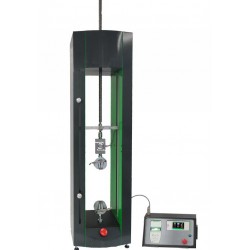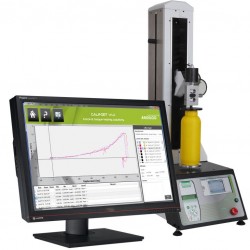
A Novel Highly Conductive, Transparent, and Strong Pure-Cellulose Film
Authors
Dieter Rahmadiawan 1, Hairul Abral 2,3,* , Rafi Alzues Kotodeli 2, Eni Sugiarti 4, Ahmad Novi Muslimin 4,5, Ratna Isnanita Admi 4, Andril Arafat 1, Hyun-Joong Kim 6 , S.M. Sapuan 7 and Engkos Achmad Kosasih
Lab
1 Department of Mechanical Engineering, Universitas Negeri Padang, Padang 25173, Indonesia
2 Laboratory of Nanoscience and Technology, Department of Mechanical Engineering, Andalas University, Padang 25163, Indonesia
3 Research Collaboration Center for Nanocellulose, BRIN-Andalas University, Padang 25163, Indonesia
4 Laboratory of High-Temperature Coating, Research Center for Physics, Indonesian Institute of Sciences (LIPI) Serpong, Banten 15314, Indonesia
5 Faculty of Defense Technology, Indonesia Defense University, Bogor 16810, Indonesia
6 Laboratory of Adhesion & Bio-Composites, Program in Environmental Materials Science, Research Institute for Agriculture & Life Sciences, Seoul National University, Seoul 151-921, Republic of Korea
7 Advanced Engineering Materials and Composites Research Centre (AEMC), Department of Mechanical and Manufacturing Engineering, Universiti Putra Malaysia (UPM), Serdang 43400, Malaysia
8 Department of Mechanical Engineering, Faculty of Engineering, Kampus UI, Universitas Indonesia, Depok 16424, Indonesia
Journal
MDPI
Abstract
Developing a conductive cellulose film without any metal compounds remains challenging, though in great demand. However, cellulose film prepared from bacterial cellulose (BC) powder without any metal compounds has poor tensile, physical, and electrical properties, thus limiting its application. Herein, this study aims to prepare and characterize an all-cellulose film from 2,2,6,6-Tetramethylpiperidin-1-yl)oxyl (TEMPO)-oxidized bacterial cellulose (TOBC) powders without adding metal compounds and treated by ultrasonication. TOBC powders are sonicated with various powers of 250, 500, and 750 W for 20 min without any other substance. It was proved that increasing the ultrasonication power level resulted in a significant improvement in the properties of the film. The ultrasonication of 750 W increased tensile strength by 85%, roughness by 308%, light transmittance by 542%, and electrical conductivity by 174% compared to the nonsonicated film. A light-emitting diode connected to a power source through this sonicated film was much brighter than that connected via a nonsonicated film. For the first time, this study reports the preparation of electrically conductive, transparent, strong, and bendable pure TOBC films by increasing ultrasonic
power for environmentally friendly electronic devices application.
Instrument used
COM-TEN 95T Series 5K
Produits associés
T-Drive CC- Machine de traction jusqu'à 20kN
- Essais de traction uniquement
- 3 capacités disponibles : 5kN, 10kN et 20kN
- 3 tailles disponibles : 500, 750 ou 1000 mm de course
- Capteurs interchangeables
- Logiciel d'acquisition et de programmation
Califort - Logiciel de pilotage et acquisition de données pour machines de test
- Utilisation et programmation intuitive
- Pilotage et acquisition de données avancés
- Edition et personnalisation de rapports
- Mise à jour et supports réguliers

.jpeg)




